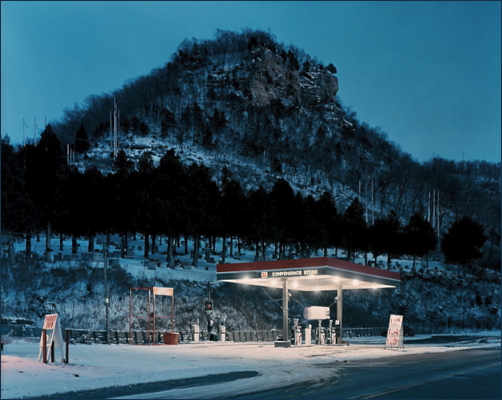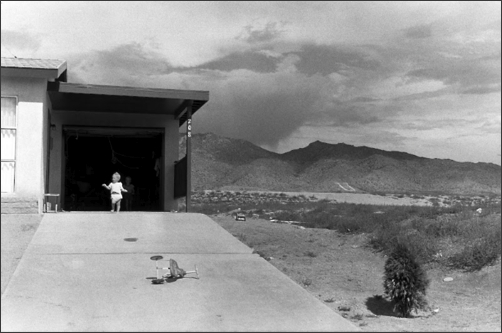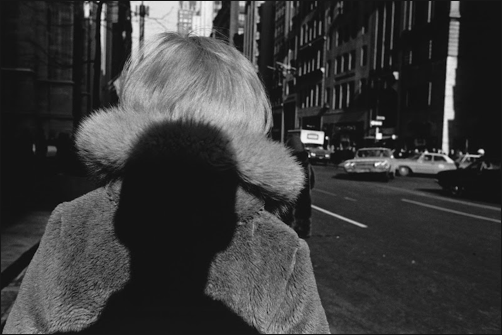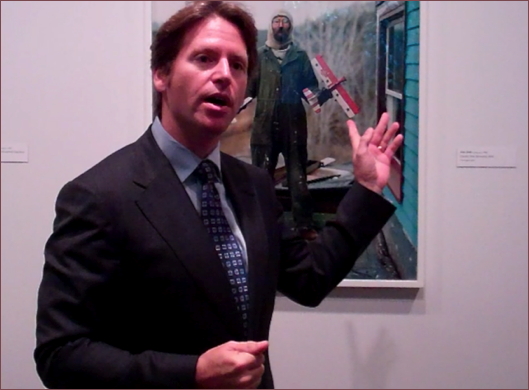Photography, the sometime stepchild of the art world, has found a permanently dedicated and exuberant family with the Fine Arts Museums of San Francisco. The current exhibit at the de Young Museum features the unique collection of San Francisco native, Trevor Traina, who is the son of Dede Wilsey, President of the Board of Trustees of the FAMSF. Real to Real: Photographs from the Traina Collection, was set into motion two years ago by the museum's former Director, the late John E. Buchanan Jr. The museum's chief curator Julian Cox observed, "John so wisely recognized that San Francisco is known internationally for the vitality of its collecting community in photography. He very much wanted an increased presence of photography at the museums."
The Traina collection, on view through September 16th, is vibrant and dynamic. It embodies the depth and diversity of this multi-faceted field.The exhibition consists of a 160 works by more than 40 artists. The roster includes the best of the brightest on the contemporary scene. Among them are Jeff Wall, Roe Etheridge, Ann Collier, Alec Soth, and Christopher Williams -- artists who are transforming the traditional definitions of what a photograph can be and the role it plays in our visual culture.
 ALEC SOTH. Cemetery, Fountain City, Wisconsin, 2002 Chromogenic print. 32 x 40 in.Courtesy of Alec Soth
ALEC SOTH. Cemetery, Fountain City, Wisconsin, 2002 Chromogenic print. 32 x 40 in.Courtesy of Alec Soth
Trevor Traina comes from a family of collectors. "I am an art omnivore," he says, "I love all things beautiful. My first job was at Seagram in New York. On the third day of the job a woman knocked on my door. She said, 'I'm the photo curator for the corporation. I've brought you a selection of photographs. Pick one and we'll install it in your office.' I was just in the mood. I chose a Nicholas Nixon photograph of 57th Street that to me was the essence of Big City, Manhattan, here I come, etc. For three years that photo hung on my wall. I left Seagram and went on my way. Later, I picked up the Wall Street Journal and I read that Seagram's was being sold and the collection is being sold. I called and got a catalog and there was this picture that I thought was my picture. I bid on it and bought it. On the back it said in pencil, 'Trevor Traina. Seagram Beverage Company'. It was the actual photograph that had been on my wall. That was what got me started on collecting."
Real to Real is divided into four galleries, four categories. "Everyday" represents the documentary tradition in photography, the everyday scenes in social life. "Excesses" reflects the experimentation of the '70s and '80s. "Spectacular" shows how photographs started becoming very large, the spectacle of scale. Artists are concerned with mass media dissemination. "Losses" deals with the economics of the times as well as the changes in photography, that being from analogic technologies to digital. "It's a moment of reflection, a moment of change," says Kevin Moore, curator of the exhibit and advisor to Mr. Traina. "But photography stays vital, it changes form. It always has, since the very beginning. There are so many different processes you can't even count them. The change in technology is really not what we're talking about when talking about photography being over. It's about the moment we're in. It's a way to discuss our current cultural and economic situation through photography."
 GARRY WINOGRAND. Albuquerque, New Mexico, 1957Gelatin silver print. 8 5/8 x 13 in.Courtesy of Fraenkel Gallery, San Francisco
GARRY WINOGRAND. Albuquerque, New Mexico, 1957Gelatin silver print. 8 5/8 x 13 in.Courtesy of Fraenkel Gallery, San Francisco
Traina realized early on that collecting good paintings or good sculpture was beyond his means. "A great painting can be double-digit million dollars," he said. "When I started to investigate photography I realized that the greatest photographs, the masterpieces are still kind-of available if you look. While they may be very expensive, they're not completely unaffordable. I don't think that is going to be the case forever. I think we're at the end of the moment where these great masterpieces are still available. In early photography they didn't make a lot of prints, there wasn't a big market. You'll see a vintage Eggleston Red Ceiling -- maybe there are twelve of them in the world. When we got ours, Kevin took it to the MoMA in New York to compare color to their two prints. It compared beautifully. That was another work I chased for a long time and stretched to be able to afford. But, again, those things won't be available forever. So, this is sort of a moment. When I began collecting, I started with a Diane Arbus piece, Identical Twins. It was from a Sotheby's sale, a vintage piece. It was the record price at auction when I got it a few years ago. It was painful to acquire, but necessary and important for a number of reasons. It's one the most seminal images of 20th century photography -- inspiring The Shining and other things, the idea of identical copies, two people of the same genetic code, how multiple prints are made the same way. That acquisition committed me to photography in a big way."
 LEE FRIEDLANDER. New York City, 1966Gelatin silver print. 7 3/8 x 11 in.Courtesy of Fraenkel Gallery, San Francisco
LEE FRIEDLANDER. New York City, 1966Gelatin silver print. 7 3/8 x 11 in.Courtesy of Fraenkel Gallery, San Francisco
"I became interested in the question of how we got from that moment where photography lived in a kind of ghetto where black and white photography was something separate from mainstream art. How do we get from those little precious black and white prints to Andreas Gursky and Thomas Struth today -- where literally every important artist almost by necessity works with photography? We have a Gerhard Richter. Name any important artist today, like Richard Prince and Damien Hirst. They either take photographs or work with photography. My question was about how we get to these big luscious photographs? That question, that exploration led me to the 1970s where I collected Stephen Shore, Joel Sternfeld, and William Eggleston -- the earliest color photographs. I wanted a great vintage Eggleston. I could buy either The Tricycle or The Red Ceiling. But I couldn't afford both of them. I chose The Red Ceiling. To me, it's the greatest color photograph because it is impossible to imagine it in black and white. So much of the emotion and the impact of that photograph is the color. That is the photograph that says 'Color is here and will not be denied.' It is integral and essential to the meaning of the work. That's why I fought for that one. There are four amazing Gurskys in this show, including Dortmund, Union Rave, Ayamonte, and Dubai World. Gursky is one of my absolute favorite artists. What he does with scale and idea is incredible. As you walk through the collection you can see how we got from this ghetto to today, where you can have a 10-foot tall Gursky brimming with color. I think this collection explains how we got there."
 TREVOR TRAINA. In background -- Charles, Vasa, Minnesota, 2002 (Alec Soth)Photo, Sean Martinfield
TREVOR TRAINA. In background -- Charles, Vasa, Minnesota, 2002 (Alec Soth)Photo, Sean Martinfield
Trevor stays in focus about his future collecting plans. "What I've been doing is going back to some of my early favorites who I kind of moved past as I grew. Recently I've been looking at Tina Barney, Nan Goldin, and Martin Parr -- some of those people I learned about a while ago and then moved on. Now I'm acquiring more of their work. The more I buy, the more I see, the more it makes me re-think other artists who I've come to know. I'm mostly attracted to color right now and to documentary photography -- a scene, real life as it were, not a still life. You can see a lot of that in the collection. I'm always paying for last month's acquisition with next month's income. I'd like to be able to catch up."
The Fine Arts Museums of San Francisco has published an accompanying book for the Real to Real: Photographs from the Traina Collection exhibition. Featuring over 85 plates, the 135-page book includes a foreword and introduction by Julian Cox, Founding Curator of Photography/ Chief Administrative Curator at the Fine Arts Museums, as well as an essay by Kevin Moore, art historian.Click here for more information: Real To Real